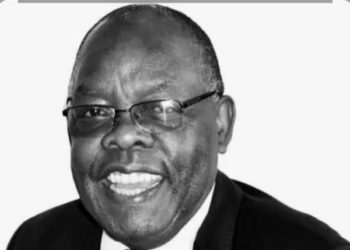Kenya’s civil service pension system, operating on a Pay-As-You-Go (PAYG) model, is increasingly showing signs of strain. Under this model, pensions are paid directly from the government’s current revenues, creating a system that is heavily dependent on the state’s fiscal health. Given recent challenges, such as the KES 23.8 billion pension default by the Treasury in the last financial year, it’s evident that this approach is unsustainable and ripe for reconsideration.
The core issue with the PAYG system lies in its dependency on the government’s ability to generate consistent revenue. As the population ages and the number of retirees increases, the financial burden on the government intensifies. This is particularly hard for a government already deep in debt distress like ours is. The PAYG model, while simple in its design, lacks the flexibility to adapt to economic fluctuations or demographic shifts. This rigidity has led to situations where pension obligations are unmet, compromising the financial security of retirees who depend on these payments.
The defined benefits structure further exacerbates this problem. By guaranteeing a specific retirement benefit based on an employee’s salary, years of service, and a predetermined multiplier, the government locks itself into long-term financial commitments. These commitments can become increasingly difficult to meet, particularly in times of economic downturn or fiscal pressure. This system, while providing predictability for retirees, also introduces significant financial risks for the state.
In contrast, a Defined Contribution (DC) system offers a potentially more sustainable solution. Under a DC model, both civil servants and the government would contribute to individual retirement accounts, which would then be invested by professional fund managers. The pension received at retirement would depend on the contributions made and the returns on investments, rather than being a guaranteed sum from the government.
This system would alleviate some of the pressure on government finances by shifting a portion of the responsibility for retirement savings to individuals. This model also introduces an element of risk-sharing, as pensions would no longer be solely dependent on government revenues but also on market performance. Additionally, by linking pension payouts to investment returns, the system becomes more adaptable to economic conditions, potentially offering higher returns during periods of economic growth.
However, transitioning to a DC system is not without challenges. The success of such a system would depend on strong regulatory frameworks to ensure the effective management of pension funds and protect against market volatility. Furthermore, civil servants would need to be educated on financial planning and investment strategies to make informed decisions about their retirement savings.
The current pension crisis in Kenya underscores the need for urgent reform. The PAYG system, while functional in the past, is now showing its limitations in an increasingly complex economic environment. A shift to a Defined Contribution system could offer a more balanced and sustainable approach, providing both security for retirees and fiscal flexibility for the government. As Kenya faces growing financial pressures, it’s time to rethink how we manage pensions to better serve the needs of civil servants and ensure long-term stability.


















